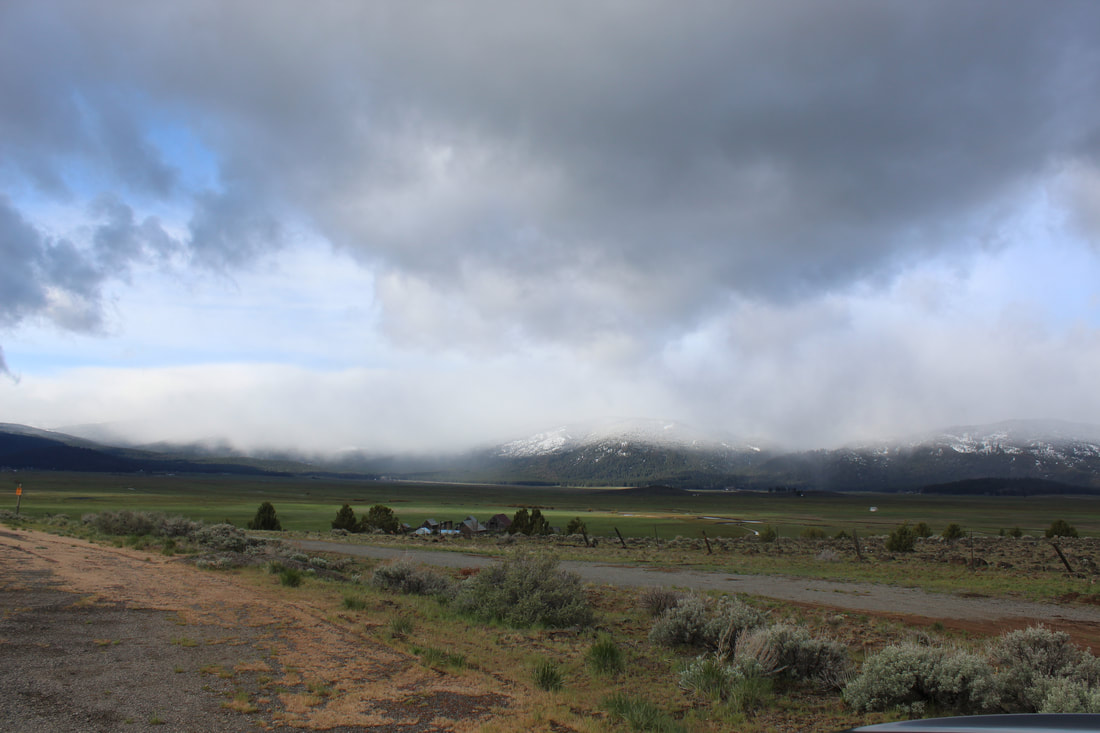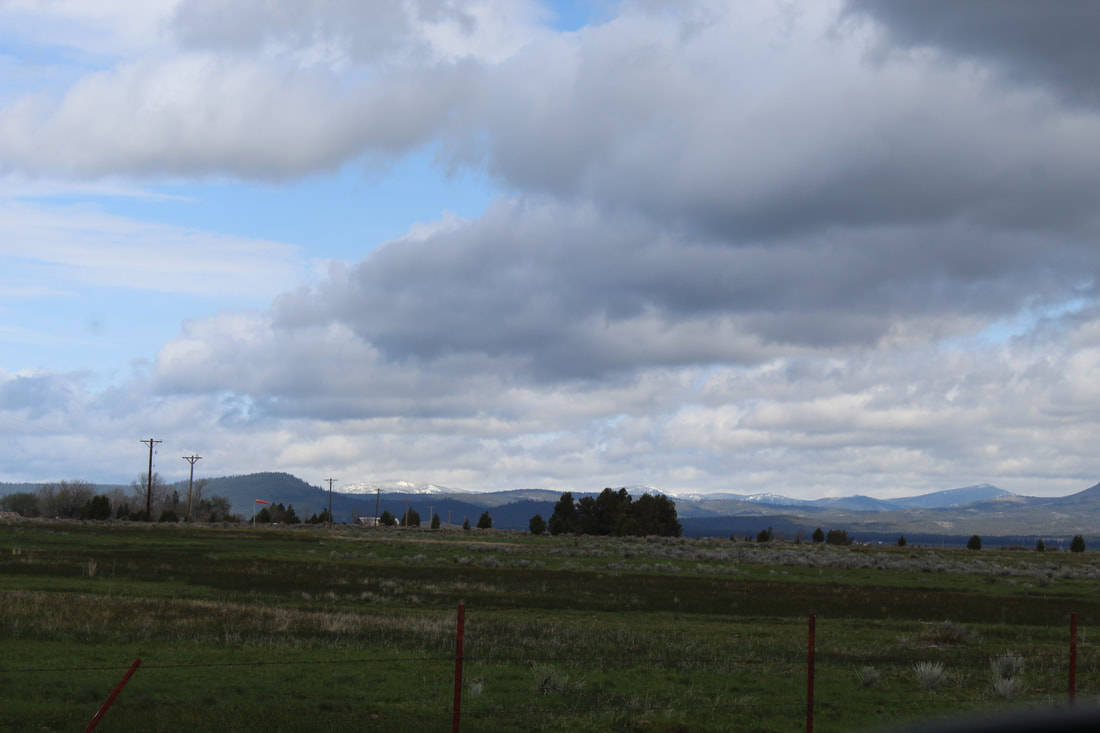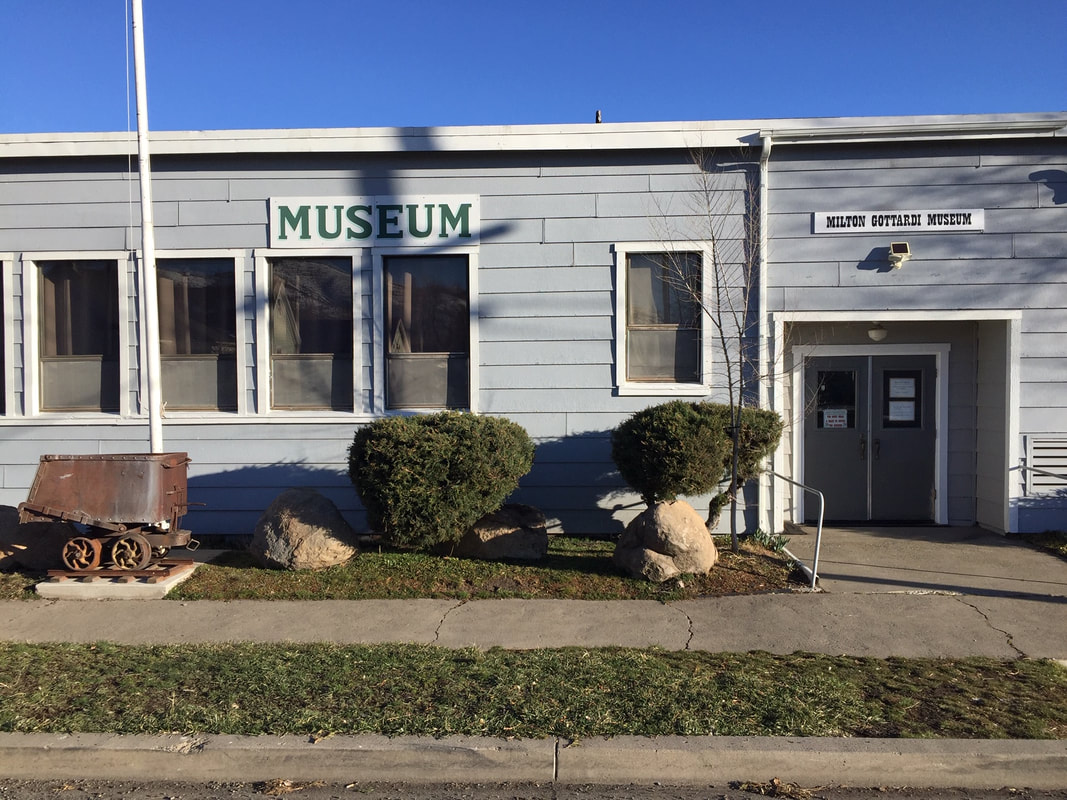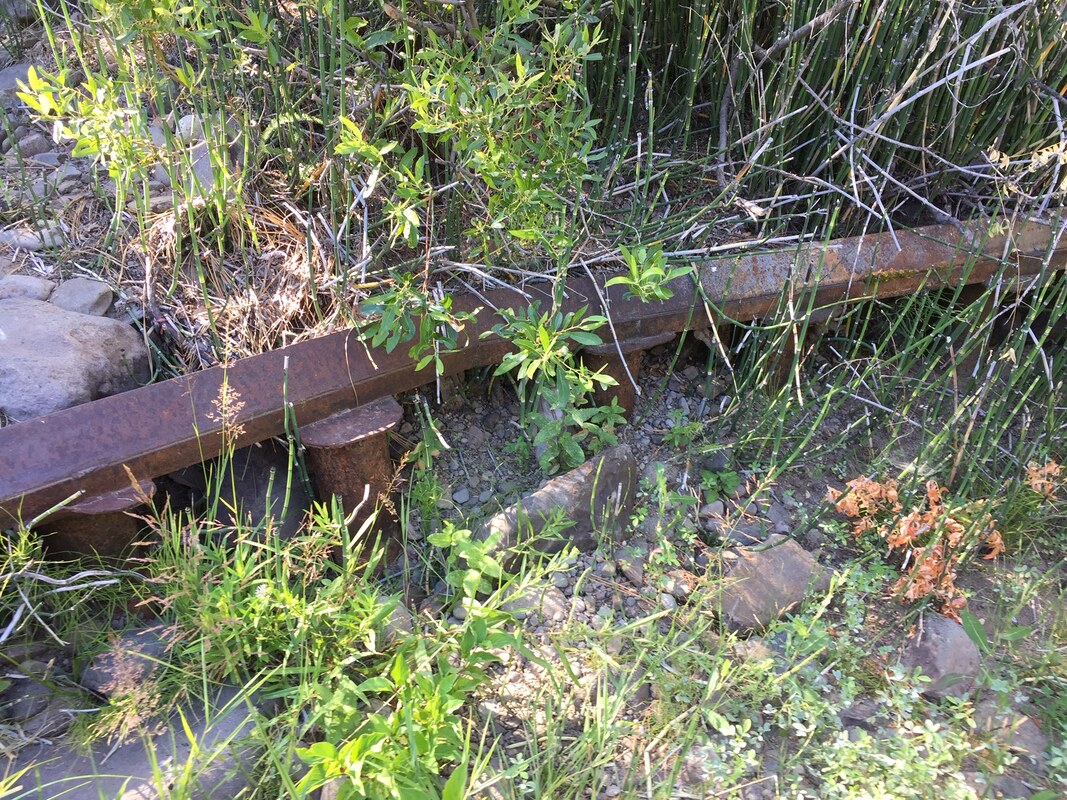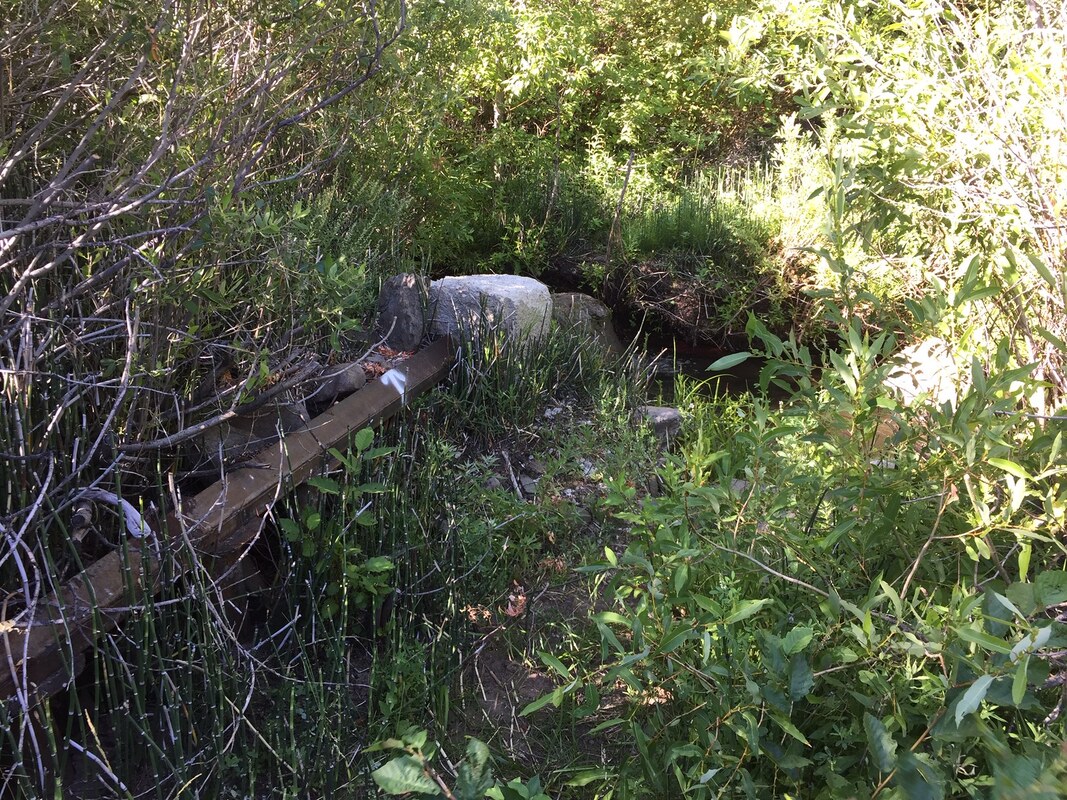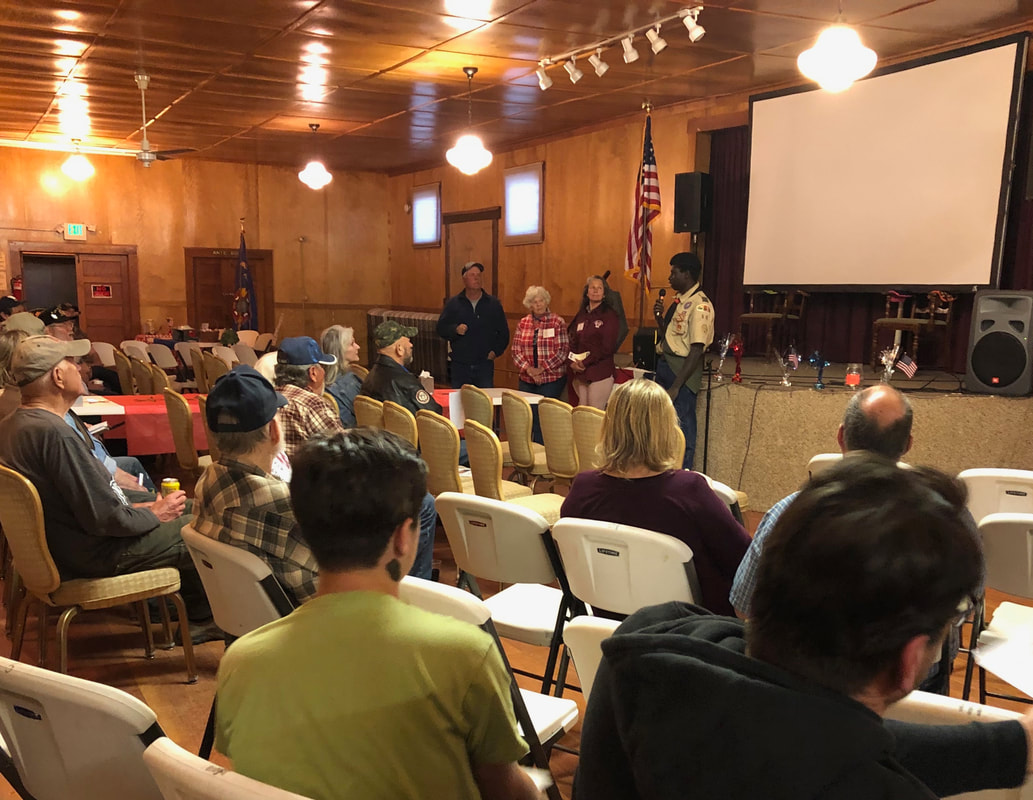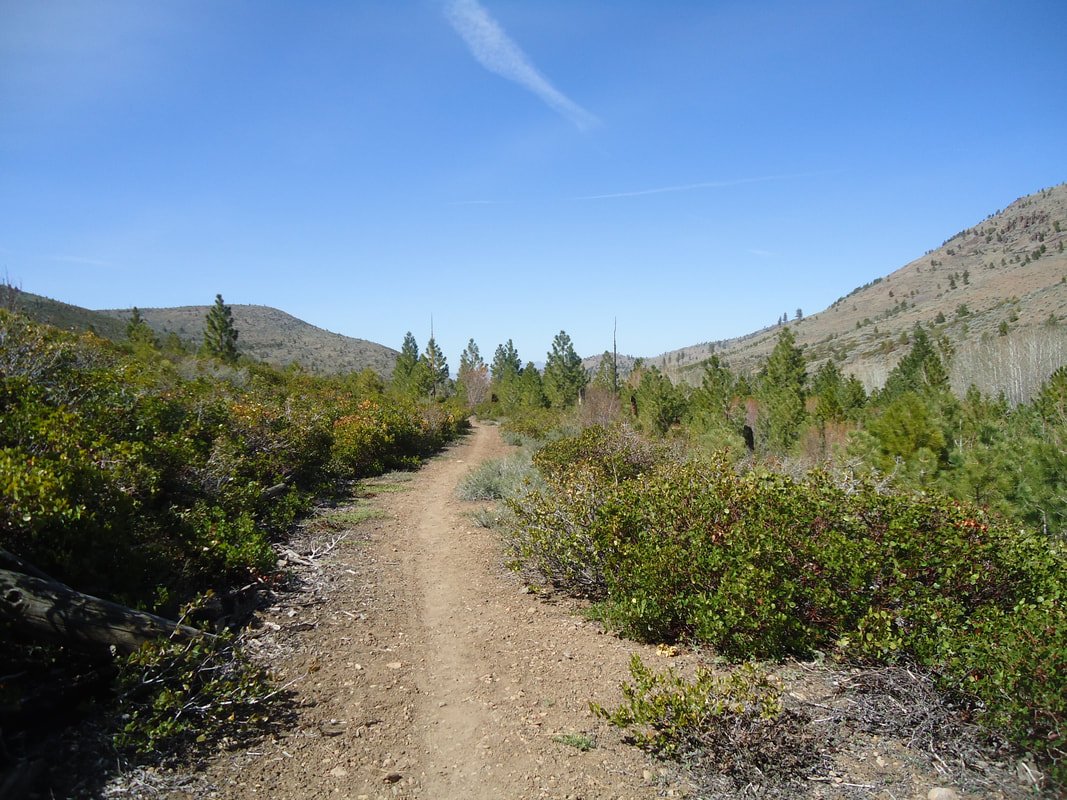|
Washington, D.C. (April 15, 2022)—The Independent Community Bankers of America® (ICBA) today announced that Andrew J. Ryback, director, president and CEO of Plumas Bank, headquartered in Quincy, California, was elected to serve on ICBA’s Legislative Issues Committee. ICBA is the nation’s voice for community banks and is committed to its 92-year mission of creating and promoting an environment where community banks flourish. “As a civic leader and advocate for my community, I’m excited to work with ICBA to bring awareness to the vital role community banks play both locally and in our nation’s economy overall,” Ryback commented. “Community banking endures because we continue to place value on our relationships with our clients and work hard to earn their trust and respect. I’m proud to be a community banker and to do my part to ensure our industry’s vitality for future generations.” In addition to helping shape and advocate ICBA’s national policy positions and programs, Ryback’s duties include engaging in grassroots activities to promote pro-community bank policies and serving as a liaison between community banks and ICBA staff and leadership in Washington, D.C. “Andy is an exceptional community bank leader who has dedicated time and resources to advance ICBA’s mission and help local communities thrive,” said ICBA Chairman Brad M. Bolton, president, CEO and senior lender at Community Spirit Bank in Red Bay, Ala. “We are honored that Andy has accepted this appointment to represent the industry and thank him for volunteering to serve as we work to ensure a bright future for community banks and the customers they serve.” About ICBA The Independent Community Bankers of America creates and promotes an environment where community banks flourish. ICBA is dedicated exclusively to representing the interests of the community banking industry and its membership through effective advocacy, best-in-class education, and high-quality products and services. With nearly 50,000 locations nationwide, community banks constitute 99 percent of all banks, employ more than 700,000 Americans and are the only physical banking presence in one in three U.S. counties. Holding more than $5 trillion in assets, over $4.4 trillion in deposits, and more than $3.4 trillion in loans to consumers, small businesses and the agricultural community, community banks channel local deposits into the Main Streets and neighborhoods they serve, spurring job creation, fostering innovation and fueling their customers’ dreams in communities throughout America. For more information, visit ICBA’s website at www.icba.org. About Plumas Bank Photo attached: Andrew J. Ryback Plumas Bank Director, President and CEO Founded in 1980, Plumas Bank is a full-service community bank headquartered in Quincy, California. Its parent company, Plumas Bancorp, is located in Reno, Nevada. The bank operates fourteen branches: twelve located in the northern California counties of Lassen, Modoc, Nevada, Placer, Plumas, Shasta and Sutter and two branches located in the northern Nevada counties of Washoe and Carson City. The bank also operates three loan production offices in the California counties of Placer and Butte and Klamath Falls, Oregon. Plumas Bank offers a wide range of financial and investment services to consumers and businesses and has received nationwide Preferred Lender status with the United States Small Business Administration. For more information on Plumas Bancorp and Plumas Bank, visit www.plumasbank.com. And with increasing gas prices and the changing weather, it’s more important than ever to go green.
According to a recent survey conducted by TopCashback.com, the USA’s most generous cash back site, energy-related expenses are significantly high. The survey polled a cross-section of 3,187 adults, aged 18 and over. Conscious of Costs How much do you typically spend on electricity bills each month?
To help reduce your energy bills and increase your eco-consciousness this Earth Day, here are three tips from Rebecca Gramuglia, consumer expert at TopCashback.com.
Please let me know if you have any questions or would like to set up an interview. Thanks so much! Kind regards, Rebecca P.S. You’re more than welcome to attribute us and relay the tips to your audience. -- Rebecca Gramuglia (she/her) | Public Relations Manager by John Grimaldi
WASHINGTON, DC, Apr 15 – In the first decade of the last century a young German psychiatrist discovered a new disease. But it took the worldwide medical community some seven decades to fully acknowledge the devastating impact of Dr. Alois Alzheimer’s diagnosis. As a result the “A-word” now has a particularly scary connotation for senior citizens. Perhaps it is because it is normal to experience memory loss as we age. But the news about the correlation between age and memory loss is not as bad as you might think, although a new proposal by the Biden Administration’s Centers for Medicare [CMS] would seek to restrict the cost of coverage for the first FDA-approved Alzheimer’s treatment, Aduhelm. According to Harvard professor Dennis Selkoe and Dr. Jeffrey Cummings, professor of brain sciences at the University of Nevada, Las Vegas, it would limit coverage “only for the tiny subset of people with early-stage Alzheimer’s disease who choose to enroll in CMS-approved clinical trials of the drug.” In an Opinion article published in the medical journal, STAT, Selkoe and Cummings wrote: “CMS arguably overstepped the bounds of its authority. Its decision is a huge blow to millions of Americans living with Alzheimer’s and their families. They are the losers in CMS’s decision, not only from the severe restriction on access to Aduhelm but also from its chilling effect on the development of other disease-modifying agents for people with Alzheimer’s. If CMS won’t pay for a treatment after the FDA legally approves it, why should a company bother pursuing this pathway? CMS’s decision will affect the exploration for new treatments for Alzheimer’s for years, just at the time when new drugs appear to be making progress against this terrible disease.” Meanwhile, the Alzheimer Society tells us that about “40% of us will experience some form of memory loss after we turn 65 years old. But even if we experience memory loss, chances are still unlikely that we have dementia. For the most part, our memory loss is mild enough that we can still live our day-to-day lives without interruption.” In fact, it is estimated that about 5% of people between the ages of 64 and 74, nearly 14% of those between 75 and 84, and nearly 35% those 85 years old and older have Alzheimer’s Disease Nevertheless, according to the National Institute on Aging [NIA], changes in brain function do take place as we grow older. “For example, some older adults may find that they don’t do as well as younger individuals on complex memory or learning tests. However, if given enough time to learn a new task, they usually perform just as well. Needing that extra time is normal as we age. There is growing evidence that the brain maintains the ability to change and adapt so that people can manage new challenges and tasks as they age.” The NIA points out that on the other side of the spectrum there are some 80 and 90 year olds out there that they call “super agers.” Memory tests show that they have cognitive performance levels comparable to men and women 20 to 30 years younger. In a report titled The History of Alzheimer’s Disease, Dr. James M. Ellison at Swank Center for Memory Care offers this piece of optimistic news: “Although the number of people with AD [Alzheimer’s Disease] continues to increase daily, our time is a brighter era in the history of AD and other dementias. More than a hundred new medications are now being tested and many nonpharmacologic interventions, some of them preventive, are being explored. Even if the damage of later stages of AD are impossible to cure or reverse, current investigations offer the hope of arresting or slowing the disease’s effects – and perhaps identifying and preventing progression at an earlier, even asymptomatic stage.” A hundred years ago people were lucky to live to be as old as 47 years of age. Thanks to science and medicine our kids and grandkids are very likely to live to be 100 years old. The majority of elder deaths generally are caused by chronic conditions such as heart disease, cancer, stroke, diabetes, and Alzheimer’s disease. During the 20th century these chronic diseases replaced acute infections as the major causes of death. These days about 42% of men and 32% of women succumb to heart disease, 30% of men and 25% of women die of cancer, 40% of men and 60% of women die of strokes and 27% of men and about 17% of women die from diabetes. According to the Centers for Disease Control [CDC], it is difficult, at best, to identify death caused by Alzheimer’s versus the death of an individual suffering from Alzheimer’s who dies from a secondary condition. Thus, unless a death certificate identifies Alzheimer’s as the cause of death, the deceased may have died from some other condition. Thus, the CDC simply reports that, “61% of those with Alzheimer’s dementia are expected to die before age 80 compared with 30 percent of people without Alzheimer’s dementia.” ### The 2.4 million member Association of Mature American Citizens [AMAC] www.amac.us is a vibrant, vital senior advocacy organization that takes its marching orders from its members. AMAC Action is a non-profit, non-partisan organization representing the membership in our nation’s capital and in local Congressional Districts throughout the country. AMAC | Washington DC | 917-846-8485 | Email | Website Association of Mature American Citizens | 17th Street N.W., Washington , DC 20036 On Monday, April 11th, the White House released a Bipartisan Infrastructure Law Rural Playbook to “help state, local, Tribal and territorial governments in rural areas unlock the benefits from the historic investments in our nation’s infrastructure and launched a rural infrastructure tour led by the President and other senior administration officials to engage rural communities across the country.” The Rural Playbook, builds on the release of the Bipartisan Infrastructure Law Guidebook and provides rural communities with information on the “what, when, where, and how to apply” for funding under the law. The Bipartisan Infrastructure Law provides up to $300 million in the 2022 fiscal year to establish electric vehicle charging, primarily in rural areas, through a new grant program.
Information Gathered Will Support Drought Response and Groundwater Management
SACRAMENTO, Calif. – The California Department of Water Resources (DWR) is using an innovative, helicopter-based technology to gather information about the state’s groundwater aquifer structure to support drought response and the implementation of the Sustainable Groundwater Management Act (SGMA). DWR’s use of airborne electromagnetic (AEM) surveys advances Governor Newsom’s Water Resilience Portfoliogoal of using technology to support the State’s understanding of groundwater resources. “The data collected during these surveys will provide a better understanding of California’s groundwater systems, and in turn support more informed and sustainable groundwater management and drought preparedness and response approaches,” said Steven Springhorn, DWR’s SGMA Technical Assistance Manager. Beginning April 24, 2022, DWR will conduct AEM surveys of groundwater basins in Colusa, Butte, Glenn, Tehama, Shasta, Humbolt, Sierra, and Plumas counties, specifically in Colusa, Butte, Wyandotte Creek, Vina, Los Molinos, Corning, Red Bluff, Antelope, Bowman, Bend, Millville, South Battle Creek, Anderson, Enterprise, Eel River Valley, and Sierra Valley groundwater basins. AEM surveys will be conducted over the next several years in high- and medium-priority groundwater basins around the state, where data collection is feasible. The survey schedule can be accessed from DWR’s AEM webpage or directly from the following link: https://gis.water.ca.gov/app/AEM-schedule. During the surveys, a low-flying helicopter tows a large hoop with scientific equipment approximately 100 feet above the ground surface. The helicopter, flown by experienced and licensed pilots, will make several passes over the survey areas and may be visible to residents. Survey data creates an image of the subsurface down to a depth of about 1,000 feet below ground surface and provides information about large-scale aquifer structures and geology. This information supports the implementation of local groundwater sustainability plans (GSPs), which can help local agencies sustainably manage groundwater during drought. For more information, please watch DWR’s short 2-minute video on the introduction to the AEM method, provided in both English and Spanish. The AEM method is safe, and surveys have been conducted successfully in several locations throughout California. Surveys will be conducted during daylight hours only, and the helicopter will not fly over businesses, homes, other inhabitable structures, or confined animal feeding operations. The helicopter operator follows all established Federal Aviation Administration rules and regulations and their highest priority is public safety. Experienced pilots, who are specially trained for the low-level flying required for geophysical surveys, will operate the helicopter. DWR encourages residents to get involved in their local groundwater management activities and GSP implementation through your groundwater sustainability agency (GSA). Information about local GSAs can be found on the SGMA portal. For more information about the AEM surveys, visit DWR’s AEM project website. For questions, please emailAEM@water.ca.gov. ### For more information, follow us on Twitter or Facebook and read our news releases and DWR updates. SBA Disaster News Release – SBA Economic Injury Disaster Loans Available to Nevada Small Businesses4/15/2022 SACRAMENTO, Calif. – Small nonfarm businesses in 17 Nevada counties and neighboring counties in Arizona, California, Idaho, Oregon and Utah are now eligible to apply for low interest federal disaster loans from the U.S. Small Business Administration, announced Director Tanya N. Garfield of SBA’s Disaster Field Operations Center-West. These loans offset economic losses because of reduced revenues caused by the drought in the following primary counties that began Jan. 1, 2022.
Primary Nevada counties: Churchill, Clark, Elko, Esmeralda, Eureka, Humboldt, Lander, Lincoln, Lyon, Mineral, Nye, Washoe and White Pine; Neighboring Nevada counties: Carson City, Douglas, Pershing and Storey; Neighboring Arizona county: Mojave; Neighboring California counties: Inyo, Lassen, Modoc, Mono, Nevada, Placer, San Bernardino and Sierra; Neighboring Idaho counties: Cassia, Owyhee and Twin Falls; Neighboring Oregon counties: Harney, Lake and Malheur; Neighboring Utah: Beaver, Box Elder, Iron, Juab, Millard, Tooele and Washington. “SBA eligibility covers both the economic impacts on businesses dependent on farmers and ranchers that have suffered agricultural production losses caused by the disaster and businesses directly impacted by the disaster,” Garfield said. Small nonfarm businesses, small agricultural cooperatives, small businesses engaged in aquaculture and most private nonprofit organizations of any size may qualify for Economic Injury Disaster Loans of up to $2 million to help meet financial obligations and operating expenses which could have been met had the disaster not occurred. “Eligibility for these loans is based on the financial impact of the disaster only and not on any actual property damage. These loans have an interest rate of 2.830 percent for businesses and 1.875 percent for private nonprofit organizations, a maximum term of 30 years and are available to small businesses and most private nonprofits without the financial ability to offset the adverse impact without hardship,” Garfield said. By law, SBA makes Economic Injury Disaster Loans available when the U.S. Secretary of Agriculture designates an agricultural disaster. The Secretary declared this disaster on April 8, 2022. Businesses primarily engaged in farming or ranching are not eligible for SBA disaster assistance. Agricultural enterprises should contact the Farm Services Agency about the U.S. Department of Agriculture assistance made available by the Secretary’s declaration. However, nurseries are eligible for SBA disaster assistance in drought disasters. Applicants may apply online, receive additional disaster assistance information and download applications at https://disasterloanassistance.sba.gov/. Applicants may also call SBA’s Customer Service Center at (800) 659-2955 or email disastercustomerservice@sba.gov for more information on SBA disaster assistance. For people who are deaf, hard of hearing, or have a speech disability, please dial 7-1-1 to access telecommunications relay services. Completed applications should be mailed to U.S. Small Business Administration, Processing and Disbursement Center, 14925 Kingsport Road, Fort Worth, TX 76155. The deadline to apply for economic injury is Dec. 8, 2022. ### About the U.S. DURING DEPARTMENT MANAGER’S REPORTS at Sierra County Board of Supervisors’ meeting on Tuesday, April 5th in Downieville, Planning Director Tim Beals reported on snow removal and road conditions. He stated Mountain House Road is open, Stampede Road is open, Galloway is still closed. Little Truckee Summit is currently open to Independence Lake but the Road Department was asked by the Forest Service to remove snow to the Perazzo Meadows area which will take place this week. Antelope Road is open. Gold Lake Road is open to Salmon Lake and expect to be at the county line by the end of the week. Beals did not know the conditions on the Plumas County side of Gold Lake Road.
Sierra Brooks water ordinance is ready for board review and will be on the April 19th agenda. Public Health and Social Services Director Vickie Clark reported on State of Emergency. She confirmed with CDPH that the emergency order was still in place and will stay in place with the federal order. Clark heard it could go as long as June, adding a lot of funding streams are connected with that order. In Sierra County, during the month of March only one active case was reported. Last week there was an uptick and had four cases reported. Clark was anticipating an increase in cases due to the new variant, which is very contagious but no severe symptoms involved. DISCUSSION on FEMA Preliminary Flood Insurance Rate Maps (FIRM) and Flood Insurance Study (FIS) was held during the Sierra County Board of Supervisors’ meeting on April 5th in Downieville. Planning Director Tim Beals updated the Board and stated on March 22nd they had productive conference call with County Surveyor Dan Bastian and Farr West Engineering who was retained by Loyalton City Council. He reported the combined efforts and investigation by Farr West outlined some extremely clear problems with modeling that FEMA had used in its mapping. These problems show up in a couple areas in Sierra Brooks, Sierraville, and Loyalton. Beals said the appeal period had not started and felt it was giving them an advantage to work with FEMA staff and the model. They have a virtual meeting on April 15th with FEMA to wrap up what they feel are critical issues involved with the mapping. Beals stated they should have a very good idea of what points should be stressed if they area pushed into an appeal. Supervisor Sharon Dryden felt they have to be as proactive as possible before the appeal process and didn’t think FEMA would change their timeline at all. Beals said they need to have a letter on the record that puts them in a position to be effective. Board Chair Paul Roen appreciated the City stepping up and being proactive. Beals agreed and felt Sierra County was in a strong position to challenge this model and show discrepancies. THE GUN RANGE in Sierraville is opening up April 15th. Calpine Lookout will be opening back up on May 15th and is completely booked, reported by Acting Sierraville District Ranger, Rachel Hutchinson during the Sierra County Board of Supervisors’ meeting held April 5th in Downieville. Candidate Interviews for the Sierra-Plumas School Board Trustee vacancy in District #2 were given during the Board meeting April 12th. Candidates were Annie Tipton of Sierraville, Glen Haubl, of Sierra City, Jeremy Miller of Sierra City, and Tom Mooers of Sierra City.
Annie Tipton grew up here and graduated from Loyalton High School and “really wants” to be on the Board with her education background. A major issue she sees is retaining teachers and mandates, funding and curriculum; things that could affect population. Glen Haubl is newer to Sierra City and Sierra County, having purchased Herrington’s in 2019. He believes in a solid school base and sees major issues as funding with a lot going to home schooling and the remoteness of the area. With experience in the financial world, he talked of spending properly and wisely. Jeremy Miller works as Sierra County’s Chief Technology Officer and has had part of his entire career around public service, coached football and has worked in education. He wants to participate and help where he can. For challenges, he sees major social changing, funding and constant change. Tom Mooers talked of the importance of school especially in smaller towns and called education “extremely important.” Major issues he sees is financial management from bookkeeping to management and staffing. He volunteers as a parent in the classroom on Thursdays, drove the van on a field trip and has spent most of his work life in non-profits. After discussion, Trustee Mike Moore moved to nominate Jeremy but it died for lack of a second. Trustee Patty Hall moved to nominate Tom, seconded by Mike Moore. Trustee Christina Potter by teleconference and President Nicole Stannard voted no. Annie’s education was important to Nicole. Patty talked about how Tom helped in the classroom and it was hard to get help. Christina spoke in favor of Annie just as the video froze. Nicole made a motion for Annie, knowing both sides of the community and being vested. It was seconded by Christina, with Mike and Patty voting no. Mike preferred Tom’s experience at the Board level over classroom teachers. Superintendent James Berardi stated with no majority, the position will remain vacant and will go to the next Board date and the candidate will only serve until December. Nicole stated it was not ”dead locked” and felt it very important to have strategic planning and for a greater good motion. She nominated Tom Mooers, seconded by Mike and approved by Patty. Christina voted no. Berardi stated in November, everyone has the opportunity to vote for this position and for Mike’s position. Tom took the oath and was seated for the remainder of the meeting. Mike Moore left the meeting due to health problems. Concern over placement of a second Adult Education Portable as a lab was discussed as it may block the paved handicap parking. Berardi has gotten City rules and setbacks and planned to have it looked at. Wendy Jackson explained placement is due to cost and budget. If placement is moved, she would need support of $17,000 more for infrastructure for propane, water, electrical lines all three times the length of estimates. Nicole stated to try and save space. AT TUESDAY NIGHT’S School Board meeting, Loyalton High School Principal Megan Meschery was looking for support for replacement bleachers and windows, which she called, “100% safety.” She added, the windows are also an energy issue and the same goes for the elementary school. The Board authorized out-of-state travel to New York City for Downieville High School students with Patrick Wilson and Niecea Freeman on Friday. It was stated they need to “move forward on busses” with Berardi stating “They don’t work.” Loyalton Elementary’s garden is in “full spring.” The California Department of Fish and Wildlife (CDFW) today announced two upcoming funding opportunities through the Cannabis Restoration Grant Program (CRGP). Each solicitation will offer up to $10 million for qualified projects.
The first opportunity is the draft Public Lands Cleanup and Remediation Solicitation for the cleanup and remediation of illicit cannabis cultivation impacts on qualified public land. The second opportunity is the draft Watershed Enhancement Solicitation for enhancing watershed and communities through road improvements, cleanup and remediation on private lands, wildlife and habitat enhancements, and/or water conservation projects. CDFW will host an online workshop on April 22, 2022, at 10 a.m. to provide an overview of the two draft solicitations, application requirements and to answer questions about these two different funding opportunities. Please see CDFW’s CRGP page for additional details about the workshop. “We are excited to continue to engage with organizations of all sizes to learn about projects that benefit the environment,” said Jeremy Valverde, CDFW’s Cannabis Program Director. “Working together with entities that may apply for these funds, we can make huge strides in protecting our native plants, fish and wildlife, which is a benefit to all in our great state.” In 2021, through this grant program, CDFW paid out nearly one million in fundsand expects to do even more this year. Grants through the CRGP are funded through California’s Environmental Restoration and Protection Account pursuant to Revenue and Taxation Code section 34019(f)(2), and may be used to fund the cleanup, remediation, and restoration of environmental damage in watersheds affected by cannabis cultivation and related activities, and to support local partnerships for this purpose. For questions on CDFW’s CRGP, please email canngrantprogram@wildlife.ca.gov. ### A local observance of the National Day of Prayer for Sierra County and the surrounding area will be held at 12 p.m. on Thursday, May 5, at the flagpole at the Loyalton firehouse at 210 Front Street. This nondenominational observance brings together people of all faiths to pray for national, state, and local governments as well as six other areas of influence in America: family, business, education, military, church, and arts/entertainment/media. The National Day of Prayer observance was created in 1952 by a joint resolution of Congress and signed into law by President Harry Truman. Each year since then the U.S. President has called upon American citizens to pray, and in 1988 President Ronald Reagan established this day of prayer to be the first Thursday of May. The observance enables people to seek the wisdom of God for the critical challenges and decisions facing lawmakers and influences. Some 60,000 events in all 50 states took place in 2021. Everyone is invited to attend the local NDP event and those in government and other leadership who attend will receive prayer for them personally. Janet McHenry is the Sierra County representative for the CA National Day of Prayer and also serves on the state leadership team, which meets virtually for prayer two hours each Saturday of the year. Those desiring more information can contact her at janetmchenry@live.com. Washington, D.C. – Today, the United States Department of Labor announced that the consumer price index (CPI) – which measures goods including gasoline, health care, groceries and rents – rose 8.5% in March from a year ago, the fastest pace since December 1981, when inflation hit 8.9%. This is higher than economists previously expected for that time period. Prices jumped 1.2% in the one-month period from February, the largest month-to-month jump since 2005. It is estimated that skyrocketing inflation rates cost the average American household $5,000 this year, with middle-income families, young adults, and minorities being hit with the highest inflation rates. An NBC News poll from March revealed that 62% of Americans’ income can’t keep up with rising costs, with real wages having decreased 9 out of the thirteen months that President Biden has been in office. Additionally, this rise in inflation has counteracted the gains from the Tax Cuts and Jobs Act (TCJA), which improved tax filing for all Americans by reducing federal tax rates for households across every income level. “President Biden inherited one of the strongest economies in our history, and unfortunately, he’s determined to reverse that. The Tax Cuts and Jobs Act reduced federal tax rates for households across every income level while increasing the share of taxes paid by the top 1 percent. This helped lift over six million Americans out of poverty. Biden’s proposed 2023 budget will only drive-up inflation, increase taxes, and chip away at Americans’ earnings. Combine these tax increases with Biden’s war on cheap energy and cutting off farmer’s water for growing food, and it’s a recipe for increasing pain for American families,” said Congressman LaMalfa. Congressman Doug LaMalfa is a lifelong farmer representing California’s First Congressional District, including Butte, Glenn, Lassen, Modoc, Nevada, Placer, Plumas, Shasta, Sierra, Siskiyou and Tehama Counties. Tom Dotta’s Grandfather, Antone Dotta, operated a hydro electric generating plant from 1900 to 1915. It was called “ Loyalton Electric Light Company” and supplied electricity to Loyalton and to California Pine Box & Lumber Company. Thanks to Tony Finder, we believe we have found the remaining foundation or ruins on Smithneck Creek just South of Sierra Brooks Camp Ground. We are hoping someone has knowledge or photographs of the actual site and route of the original transmission lines. If you have any additional information, please contact Jackie Mitchell, Museum Curator, at 530-993-4012, or Bob Feeny, Museum Volunteer, at 530-773-5070. Ruins of Hydro Electric Plant Tony Finder is shown at what is believed to be the ruins
GEOPHYSICAL SURVEYS are scheduled to be conducted in a groundwater basin within portions of Plumas and Sierra Counties over several days starting in late April 2022.
This survey is part of California Department of Water Resources’ (DWR) project to conduct airborne electromagnetic (AEM) geophysical surveys throughout the state. The surveys are being conducted to improve the understanding of groundwater resources and support the local and state goal of improved groundwater management and implementation of the Sustainable Groundwater Management Act (SGMA). The surveys are funded through voter-approved Proposition 68 and there is no additional cost to locals. DWR’s video provides more information about EM surveys: https://www.youtube.com/watch?v=HMSZdzzOrUE. AEM data are collected fringe a large hoop towed beneath a helicopter. the method is safe and surveys have already successfully been conducted in several locations throughout California. Surveys will only be conducted during daylight hours and the helicopter will not fly over business, homes, other inhabitable structures or confined animal feeding operations. The helicopter operator follows all established Federal Aviation Administration rules and regulations, and their highest priority is public safety. For more information about the surveys, visit DWR’s AEM project website, www.water.ca.gov/programs/SGMA/AEM. Establishing fiscally responsible habits is important for every age and stage of life
Quincy, Calif. (April 12, 2022)--Plumas Bank and the Independent Community Bankers of America (ICBA) are celebrating Financial Literacy Month in April and encouraging Americans to take control of their financial future by learning fiscally responsible habits and putting these lessons into practice. According to the National Foundation for Credit Counseling (NFCC®) 78 percent of U.S. adults believe that despite what they already know about personal finance, they could still benefit from financial advice and answers to everyday financial questions from a professional. “No matter where you are in your personal financial journey, having a strong foundation of financial principles and best practices for money management will help you avoid financial pitfalls and set you up for financial success,” commented Elizabeth Wainscoat, Plumas Bank business advisor and branch manager in Truckee, Calif. “As your trusted financial advisor, Plumas Bank is here to help you navigate the financial landscape with confidence when making financial choices that can affect your future.” Often referred to as America’s favorite lenders, community banks are financial experts with a wealth of knowledge and local expertise that make them uniquely suited to help you reach your financial potential through assistance with:
ICBA also offers financial literacy programs through community bank partners including Visa’s Practical Money Skills, the FDIC’s Money Smart initiatives and the Jump$tart Coalition for Personal Financial Literacy. About Plumas Bank Plumas Bank is a full-service community bank headquartered in Quincy, California. The bank operates fourteen branches: twelve located in the California counties of Plumas, Lassen, Modoc, Nevada, Placer, Shasta, and Sutter and two branches located in Nevada in the counties of Carson City and Washoe. The bank also operates three loan production offices located in the California Counties of Butte and Placer, and Klamath Falls, Oregon. Plumas Bank offers a wide range of financial and investment services to consumers and businesses and has received nationwide Preferred Lender status with the United States Small Business Administration. For more information on Plumas Bancorp and Plumas Bank, please visit our website at www.plumasbank.com. About ICBA The Independent Community Bankers of America creates and promotes an environment where community banks flourish. ICBA is dedicated exclusively to representing the interests of the community banking industry and its membership through effective advocacy, best-in-class education, and high-quality products and services. With nearly 50,000 locations nationwide, community banks constitute 99 percent of all banks, employ more than 700,000 Americans and are the only physical banking presence in one in three U.S. counties. Holding more than $5 trillion in assets, over $4.4 trillion in deposits, and more than $3.4 trillion in loans to consumers, small businesses and the agricultural community, community banks channel local deposits into the Main Streets and neighborhoods they serve, spurring job creation, fostering innovation and fueling their customers’ dreams in communities throughout America. For more information, visit ICBA’s website at www.icba.org. ### Dr. Glenn Mollette Most doctors will encourage their patients to not overdrink alcohol. Too much might cause you to fall and impairs an individual’s ability to make good decisions or drive an automobile. Going on a binge of anything may not be a positive decision. Giving up food for a day will make you sluggish and probably irritable. Eating a buffet usually brings regret. Going to the gym to work out for three hours will just zap you for the rest of the day. Working 29 days out of the month will make you more money but when will you be able to enjoy what you’ve earned? We need fruit and vegetables every day but you can overdo fiber. How much time do you have to keep so many relationships going? The Bible says a man of too many friends will soon come to ruin. There are lots of scenarios of too much. You can play too much, work too much, party too much, spend too much and even save too much. You can spend your life searching for love and being in and out of love. In the end, you are exhausted and drained. You can spend too much time in church and doing religious kinds of things. What good are you to the world and others if all you ever do is sit in church? Faith must be fleshed out and put into practice. The basketball team wants to do more than just practice seven days a week. The exhilaration comes in playing the game. You don’t want to spend your life reading about the ocean. You want to go and see and swim in the ocean. You don’t want to spend your life cooking in the kitchen. You would like to sit and savor some of the delicious food from the kitchen. Life is about participating as much as you can, when you can, and as you are able. We all have limitations but we hope and dream. The hopes and dreams keep us going and trying. When we lose these it’s easy to give up. The cancer patient hopes for a cure and hangs on. Moderation is the key to most of life. Work some, play some, love some, help others some, cultivate your faith, friends, family and diversify your diet. Yes, include fruit and vegetables and some exercise. Watch some television and news but don’t live in front of the television. Most of the news is bad. The cable news channels and evening news are filled with the bad things of the day. Obviously bad news is what makes money. If you work 50 hours a week, then take stock of your blessing to have a job. Consider how you might do your work better and more effectively to help your employer and fulfill yourself. Give some thought to aiming for balance in your life. A balanced tire always rides better. When possible, practice moderation in all things and try to utilize rigid flexibility. An inflexible life will eventually break. Hear Glenn Mollette every weekday morning EST at 8:56 and 11:31 on XM radio channel 131 Contact him at GMollette@aol.com. Learn more at www.glennmollette.com additional biographical, Dr. Glenn Mollette is a graduate of numerous schools including Georgetown College, Southern and Lexington Seminaries in Kentucky. He is the author of 13 books including Uncommon Sense, Grandpa's Store, Minister's Guidebook insights from a fellow minister. His column is published weekly in over 600 publications in all 50 states. Pre-show Introductions: L to R: Rick Roberti, Plumas-Sierra Cattlemen, Flinda France and Debbie Thompson, Plumas-Sierra CattleWomen, and Nate Smeltzer
Sierra Valley Grange hosted a special showing of the movie, Oildale. The Plumas-Sierra CattleWomen and Cattlemen sponsored this heartwarming movie that honors our Veterans. The Director, Dave Mueller and Screen Play Writer, Lynn Salt were in attendance to speak to the audience about their motives, mission, and passion that went into the making of their movie. The evening was a benefit for the Sierra Valley Grange and the Plumas County Veterans Stand Down. The CattleWomen provided a full snack bar plus complementary Hotdogs for the guests. Special guests in attendance were Bill Cook and Michael Tortora from the VA, Steve Ross, Pat Fruchtennicht and Don Yegge from the VFW, Scott Quade from the Plumas County Veterans Standown, and Nate Smeltzer with his Eagle Scout Honor Flag Project. About 125 people attended the show. Oildale turned out to be a wonderful story about families, Veterans and persevering in life. The CattleWomen, Cattlemen and the Grange wish to thank the organizations, the Veterans, their families and community members who attended. - Story and photo courtesy Laural Colberg who wrote, "It was such a moving experience, one that I was personally so honored to have been a part of! I can't convey the emotions from the night adequately." SACRAMENTO—The California Department of Education (CDE) today released K–12 public school enrollment data for the 2021–22 academic year. The annual snapshot of fall enrollment shows a fifth year of decline as the state emerges from two challenging years of the COVID-19 pandemic. The release provides yet another data point in the continuing analysis of California’s overall demographic shifts and related pandemic impacts. The information is crucial to understanding how best to plan for a robust recovery in years ahead. California enrollment declines are consistent with national data trends that show enrollment is dropping across the country. These declines began prior to the pandemic and are projected to continue into the future in California. Large urban districts in California account for close to a third of the drop in the current year. Reports published suggest that both Chicago and New York also saw significant declines for the second year of the pandemic. With this data release, we see that the COVID-19 disruptions are playing a large part in negating the steady enrollment gains over the last decade. In an effort to address the needs of local educational agencies (LEAs), the CDE has provided supports to districts on outreach to families of chronically absent students during the pandemic. Special attention is also being placed on boosting transitional kindergarten and kindergarten enrollment and helping schools to meet the needs of families around transition years and to offer options and pathways to keep high school students connected. In addition, the CDE is supporting efforts to increase funding to offset declining enrollment, including sponsoring two key bills: Senate Bill 830 (Portantino), legislation that could provide school districts with financial supports as well as resources to create outreach strategies to reengage with students and families who may have experienced increased barriers to access during the pandemic, and Assembly Bill 1640 (Muratsuchi), a bill that would increase the base grants to amounts equal to the national average per-pupil funding level. Statewide findings for this year's enrollment data during COVID-19 in 2021–22 include: Total Enrollment Enrollment is down from 6,002,523 in 2020–21 to 5,892,240 in 2021–22, a decrease of more than 110,000 students and 1.8 percent from the prior year. This follows a steady decline in public school enrollment statewide since 2014–15. Enrollment by Race/Ethnicity Data from 2020–21 to 2021–22 show that total enrollment of African American students declined 3.6 percent, Asian students declined 1.9 percent, Hispanic/Latino students declined 0.9 percent, and White students declined 4.9 percent. The student group that identified as two or more races increased by 1.7 percent while the student group that did not report their race increased by 18.3 percent. Grade-Level Trends Trends show that the largest grade-level decreases in the enrollment data can be found in grades one, four, seven, and nine. Enrollment increases from the prior year occurred in kindergarten and grade twelve. The data are compiled by the CDE from data submitted annually by LEAs to the California Longitudinal Pupil Achievement Data System (CALPADS). Under state law enacted during the pandemic, school districts will not experience a decline in revenues due to decreases in attendance in the current academic year. The updated enrollment data are available on the CDE Data Quest website. ### The California Department of Education is a state agency led by State Superintendent of Public Instruction Tony Thurmond. For more information, please visit the California Department of Education’s website. You may also follow Superintendent Thurmond on Twitter, Facebook, and YouTube. - EASTERN PLUMAS HEALTH CARE held its regular Board of Director’s meeting on Thursday, March 24th through Zoom.
Chief Financial Officer Katherine Pairish reported total year-to-date revenues were over last year by $5,454,975. This is a 22% increase. Inpatient revenues were over last year by $1,955,032. Skilled Nursing revenues were over last year by $1,057,700. Outpatient revenues were over last year by $3,248,969 and Clinic revenues were over last year by $250,974. Total expenses were over last year by $3,059,585 or 16%. Gross accounts receivable as of February 28, 2022 was $5.8 million. Director of Clinics, Paul Bruning reported February had been their best month in terms of revenue for the fiscal year and felt it was primarily due to having a second dentist, adding the dental clinic almost doubled its income. He stated they are starting an urgent access clinic to help with increased need for same day and sick visits. Bruning explained Primary Cares were having a hard time getting in their own patients and as the population base increases, they need someone dedicated to see same day patients. Dana Culp, FNP will help with this and modifying hours Monday, Wednesday, and Fridays to 8 a.m. – 4 p.m. with walk-ins. Tuesday and Thursday 12 p.m. – 7 p.m. to extend hours to provide more access for the community. Bruning stated so far it’s been well received. Director of Rehab Services, Jim Burson, reported this month the department is three years old and started with just one therapist and one part-time therapist and now have 14 in the department. He remarked they have a great team. Average patients per day was up 15%. New referrals are up 66%. CEO, Doug McCoy, stated in his executive summary the Board approved annual COLA increases that were well received as were the adjustments to the nursing staff hiring scales. Aggressive recruitment continues in order to reduce traveler expense and increase EPHC overall census. Staffing waivers for CNAs and training classes have been extended by the State until June 30th. EPHC had its bi-annual lab CLIA recertification survey completed on March 8th. There were some findings that will be corrected through a written plan of correction. EPHC will be purchasing a new lab analyzer to increase testing capabilities and result times through a State grant opportunity. Installation of the new equipment is anticipated to be completed by the end of April. No deficiencies were identified in the survey results from the February Skilled Nursing Facility visit. A Loyalton Boca pre-hike was held for the April 30th opening hike. Meet at the Loyalton downtown kiosk at 10 a.m. For information, call Loyalton Senior Center at (530) 993-4770.
Trail shots by Gus Donowho. Exemptions Needed for Temporary Signs Visible From Highway REDDING– As the 2022 election season continues, political candidates and campaign workers for either an office or a ballot measure are reminded about a state law governing the placement of “Temporary Political Signs” within view of a state highway. Section 5405.3 of the State Outdoor Advertising Act allows an exemption for the placement of “Temporary Political Signs” along certain state highways. However, these signs are not to be placed within the state right of way. In addition, signs cannot be visible within 660 feet from the edge of the right of way of a classified “landscaped freeway.” In Caltrans District 2, there are 15.5 miles of roadway that fall under the “landscaped freeway” classification, which covers ornamental planting covering at least a 1,000-foot-long continuous stretch of state right of way. (See attached list of landscaped freeways) If campaign signs are within view of a state highway, candidates MUST file a Statement of Responsibility form with Caltrans’ Outdoor Advertising Program in Sacramento. A temporary political sign meets the following criteria:
State law directs Caltrans to remove unauthorized temporary political signs and bill the responsible party for their removal. For more information or copy of the form “Statement of Responsibility” for temporary political signs, please visit: https://dot.ca.gov/programs/traffic-operations/oda/political-signs A completed Statement of Responsibility must be submitted to: Caltrans Division of Traffic Operations, Outdoor Advertising Program, P.O. Box 942874, MS-36 Sacramento, CA 94274-0001 General questions regarding political signage can be directed to the Office of Outdoor Advertising by email or by phone at (916) 654-6473. District 2 Public Information can also be contacted with questions by email or phone at (530) 225-3426. ### Throughout the Western United States, it is very common to find the center of any emergency or crisis to be the local fairgrounds. They serve as evacuation centers for people and animals, fire camps, COVID testing and vaccination centers, cooling and heating centers, and even homeless shelters. The annual county fair is, of course, the “Super Bowl” event of these facilities, but the bulk of the use at a fairgrounds is serving the community with whatever it may need. In Plumas County, we are all too aware of how the needs of our community in crisis put aside the joy of many events, including our Fair. Two years in a row. 2022 looks like we will see our Fair return, along with many other events we all look forward to. As we shift back into what has always been “normal”, the Plumas Sierra County Fairgrounds has taken a deep look into what it does, and what it should do. Make no mistake, the core purpose of a county fair is to share what a community makes, grows and raises. The fair judges and recognizes these products, as fairs have done for centuries. The goal of every message leading up to the fair is to encourage people to enter their flowers, vegetables, quilts and photographs. Perhaps we have become too complacent. Maybe we should be asking where the innovation is. Everyday items were once the most amazing innovations on earth; Cracker Jacks, the Ferris Wheel, Pabst Blue Ribbon beer, electricity for goodness sake! All introduced at a fair. Why not us? And why not now? A series of circumstances might just point to now being the perfect time to innovate. The presence of the Dixie Fire Camp was certainly an economic help to the Plumas Sierra County Fairgrounds. The devastation of Indian Valley has created a no-less than “start from scratch” situation in that beautiful area. Since the ultimate goal of the fairgrounds is to show the world what its community makes, grows and raises, it only makes sense that the Plumas Sierra County Fairgrounds invests some of the funds it earned from the Dixie Fire Camp to do that. It also makes sense that since many people have lost their ability to can, sew, or grow, we have to start working together to innovate. And finally, if we put together the resources available at this moment in time, there is no reason we cannot create products that the world would want to know about. If we can do that, then the world will want to buy those things, and THAT’S how we start to rebuild economically. Where do we start? The Plumas Sierra County Fairgrounds is proposing the creation of the Indian Valley Innovation Hub. In a nutshell, the goal is to organize a group of people to gather resources in the form of mentors, experts, tools, equipment, marketing, distribution, financing and branding to encourage the people in Indian Valley to innovate. What kind of products, or services can be developed with the knowledge and raw materials available right now in that community? Does the presence of burnt timber or small diameter trees present an opportunity for home accents, furniture or frames? Are there crops that grow especially well in Indian Valley that can be packaged, branded and sold to restaurants in North Tahoe? Those might be the stupid ideas! But every idea is worth looking at. There are two meetings scheduled to explore this concept; Wednesday, April 13 from 6 to 8pm and Saturday, April 30 from 11am to 1pm. Both will be held in the Greenville Elementary School Cafeteria. A presentation will be given on how an idea like this would be organized, and then the floor will be opened up to product ideas. This will be the chance to see if there are, in fact, innovative ideas worth pursuing. Attendees will be asked if they know of anyone who has expertise in certain areas; machine working, wood working, marketing, packaging, logistics or industrial design. They will be asked if they have or know where we can acquire tools and equipment for use in developing these projects. Most importantly, they will be asked to share ideas. There will be no need for a presentation, or explanation, just an idea. We will write it on some paper, and when we are all done, we will look at it and say, “Yeah, this is a good idea.” or “We got nothing, let’s look at something else.” Either way is progress. |
CONTACT US:Sierra Booster Newspaper
PO Box 8 Loyalton, CA 96118 Phone: 530-993-4379 Fax: 844-272-8583 Email: jbuck@psln.com Website Privacy Policy |
©Copyright Sierra Booster - Sierra County News - Editorial
Website by Chamber Nation
|

